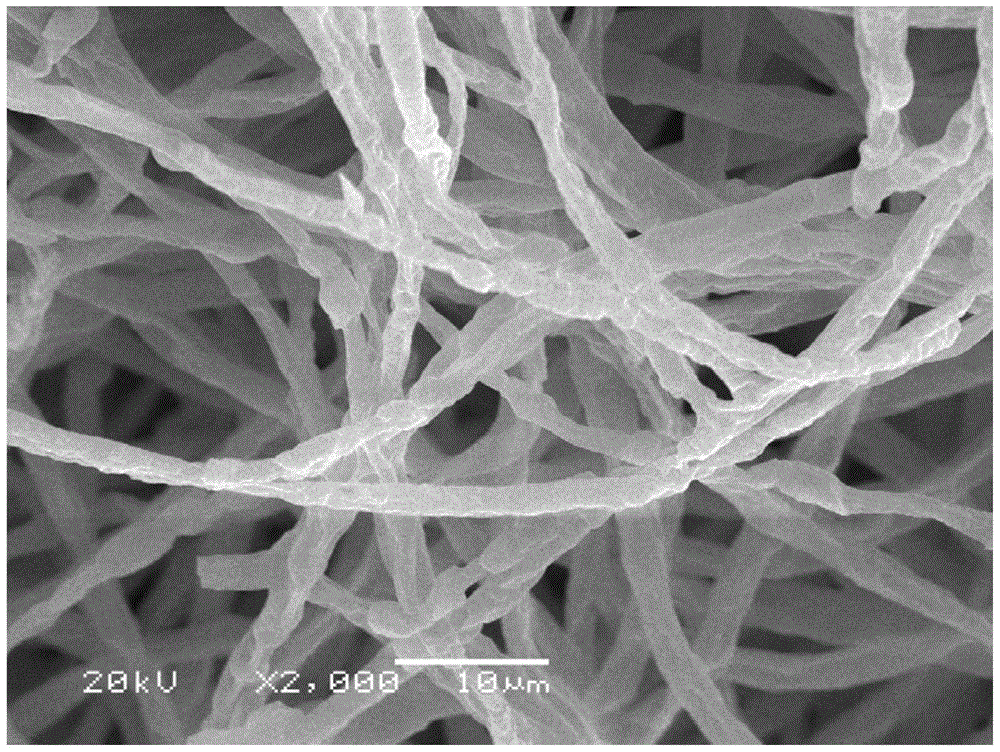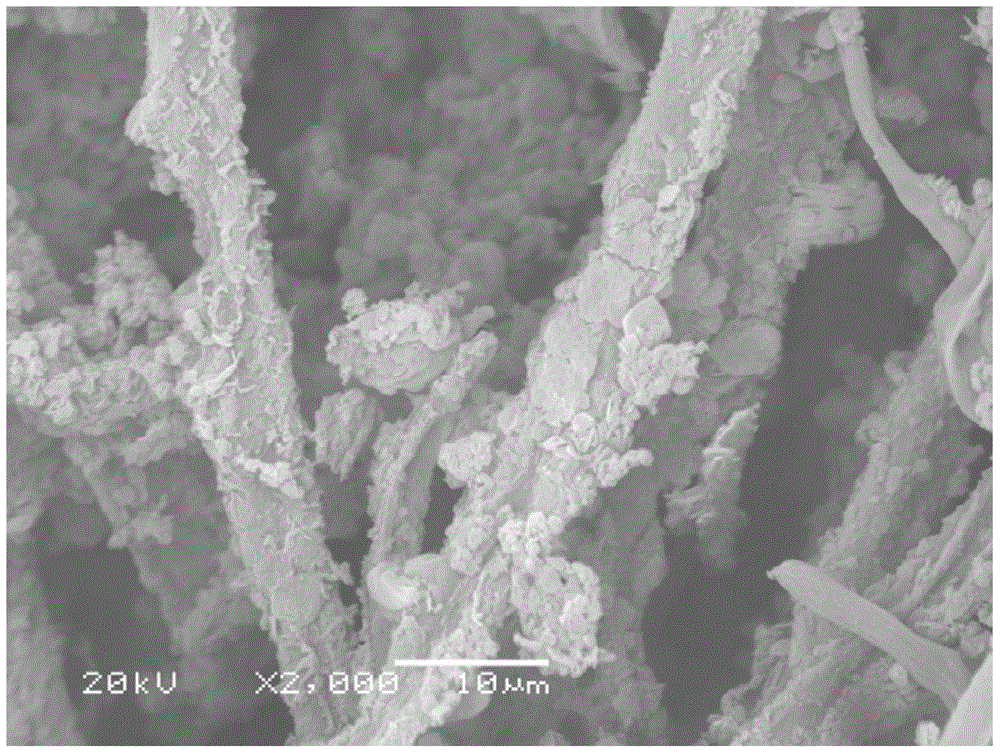Application of phosphorus base charcoal material to remediation of lead contaminated soil
A lead-contaminated soil and biochar technology, applied in the restoration of polluted soil, can solve the problems of reducing the bioavailability of heavy metals, and achieve the effect of clean and sustainable process, stable performance and convenient large-scale production
- Summary
- Abstract
- Description
- Claims
- Application Information
AI Technical Summary
Problems solved by technology
Method used
Image
Examples
Embodiment 1
[0037] To prepare the phosphorus-based biochar material for repairing lead-contaminated soil of the present invention:
[0038] (1) Using PDA medium to activate and expand Aspergillus niger (Aspergillus niger), purchased from China Type Culture Collection, strain number CCTCCAF91006;
[0039] (2) 1.0g of hydroxyapatite nanoparticles (particle size 97%) was added to 200mL of liquid PDA culture medium, and ultrasonic dispersion with a power of 100 watts was used for 2 hours;
[0040] (3) Put the PDA medium containing nano-hydroxyapatite into a high-temperature autoclave, set 115°C, and sterilize for 25 minutes. After high temperature and high pressure sterilization, the culture medium is transferred to the ultra-clean aseptic operation table, and the ultraviolet light is turned on for 60 minutes;
[0041] (4) In the ultra-clean aseptic operation table, inoculate the activated mycelium in step (1) into the sterilized medium of step (3), the inoculation volume is 2 mL; the mass concentrat...
Embodiment 2
[0048] The soil was taken from low-polluted paddy soil around a lead-zinc tailings pond. After removing gravel and broken roots, the test soil is air-dried naturally, mixed evenly in quarters, and crushed through an 18-mesh nylon sieve. The soil pH is 6.58, which is weakly acidic. The content of available Pb in the soil is 479.6mg / kg.
[0049] Separately add 0.2g of the phosphorus-based biochar material in Example 1 (containing the amount of n-HAP equal to the amount of pure n-HAP weighed) and pure n-HAP into 5.0g of low-polluting soil, mix well, and add 10mL After 7 days of fixation, use 25mLDTPA to extract the effective form of lead in the soil. After testing, the effective lead content of low-polluted soil before and after treatment with phosphorus-based biochar material or pure n-HAP is shown in Table 1.
[0050] Table 1 Effective Pb content before and after treatment in low-polluted soil
[0051]
Embodiment 3
[0053] The soil was taken from the highly polluted paddy soil around a lead-zinc tailings pond. After removing gravel and broken roots, the test soil is air-dried naturally, mixed evenly in quarters, and crushed through an 18-mesh nylon sieve. The soil pH is 6.52, which is weakly acidic. The content of available Pb in the soil is 1512.3mg / kg.
[0054] Separately add 0.2g of the phosphorus-based biochar material in Example 1 (containing the amount of n-HAP equal to the amount of pure n-HAP weighed) and pure n-HAP into 5.0g of highly contaminated soil, mix well, and add 10mL After 7 days of fixation, use 25mLDTPA to extract the effective form of lead in the soil. After testing, the content of lead in highly polluted soil before and after treatment with phosphorus-based biochar material or pure n-HAP is shown in Table 2 below.
[0055] Table 2 Content of available Pb before and after treatment of highly contaminated soil
[0056]
PUM
 Login to View More
Login to View More Abstract
Description
Claims
Application Information
 Login to View More
Login to View More - R&D
- Intellectual Property
- Life Sciences
- Materials
- Tech Scout
- Unparalleled Data Quality
- Higher Quality Content
- 60% Fewer Hallucinations
Browse by: Latest US Patents, China's latest patents, Technical Efficacy Thesaurus, Application Domain, Technology Topic, Popular Technical Reports.
© 2025 PatSnap. All rights reserved.Legal|Privacy policy|Modern Slavery Act Transparency Statement|Sitemap|About US| Contact US: help@patsnap.com



